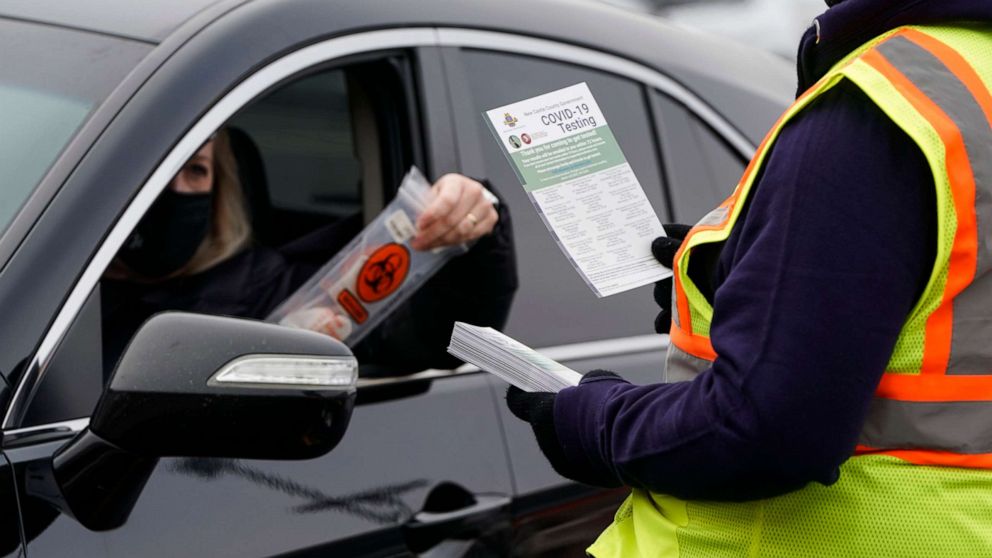


Two independent research groups published findings confirming what many scientists have long suspected: The U.S. has its own unique COVID-19 viral variants that are distinct from the U.K. and South African lineages making headlines in recent weeks.
On Wednesday, researchers from the Ohio State University Wexner Medical Center announced two distinct, newly identified variants. The next day, researchers at Southern Illinois University said they found a variant that may have emerged months ago and quickly spread across the country. The variant is likely the same or similar to one of the variants identified by the Ohio researchers.
While viruses mutate constantly, these mutations are not inherently dangerous, experts cautioned. More scientific experiments will be needed to show whether the newly identified U.S. variants are more transmissible, more deadly or if they might impact the vaccine.
And researchers predicted even more variants could be identified in the coming weeks as more scientists start looking for them.
"This should be a wakeup call that we’re not doing enough genomic surveillance," said Dr. Angela Rasmussen, a virologist and associate research scientist at the Center of Infection and Immunity at Columbia University's School of Public Health.
"We’re going to see a lot of these papers coming out," said Rasmussen, who was not involved in either study. "Whether [the variants] are associated with increased transmissibility or not remains to be seen."
Since the emergence of new variants around the globe, there has been fear that they will cause more severe disease and deaths, be more transmissible and render the vaccines ineffective. It first started with variants identified from U.K. and then South Africa, both of which are thought to be more transmissible but not more deadly. But they're unlikely to undermine the current vaccines, according to very preliminary research.
MORE: Hospitals and businesses are offering incentives to those hesitant about getting COVID-19 vaccinesResearchers at Southern Illinois University are calling this U.S. variant 20C-US. The variant isn't new, just newly identified. Its origin was traced back to a patient sample in Texas from May 2020. Since then, the variant seems to have swept across the country. According to Dr. Keith T. Gagnon, one of the lead researchers of the study released by Southern Illinois, 20C-US now compromises about 50% of samples in the country. It is currently widespread in the Upper Midwest, which could be why researchers at Ohio State detected a strikingly similar variant.
Dr. Daniel Jones, one of the lead authors of the study from Ohio State, told ABC News that these variants could be from the same lineage but more research on each is needed.
While some researchers, including the White House Task Force's Dr. Deborah Birx, have speculated there might be a U.S. variant circling the nation, these two studies are the first ironclad evidence of one.
Gagnon said it has taken scientists in the U.S. months to identify this variant because the U.S. is not systematically monitoring and tracking the ever-changing genetic makeup of COVID-19 samples collected from patients.
Gagnon also said it's possible the 20C-US variant is more transmissible, especially with the surge of infections in the fall and winter. The variant could have gotten lucky and gained a foothold as people were spending more time indoors and seeing family and friends for the holidays without proper social distancing and mask wearing.
With multiple vaccines now available, there is the fear that this new U.S. variant will render the vaccines ineffective. But so far there is no evidence that the mutations impact the efficacy of the vaccines.
"Here it was, underneath our noses for months," Gagnon said, meaning volunteers who were vaccinated in the large, late-stage vaccine trials were likely exposed to it and a majority were protected.
MORE: COVID-19 mutations spark global concerns“It doesn’t look like it’s going to get in the way of vaccines," Gagnon added. The researchers at Ohio State agreed with those sentiments in their press conference earlier this week.
The other variant that Ohio State researchers discovered was found in only one patient. It has similar mutations seen in the U.K. and South African variants but was not associated with travel and developed independently here in the U.S. It is unclear how much of the population has this variant and if it will be an important.
Both groups recommended to keep calm and wait for more experimental studies to determine what these variants will do.
“We’re not ready to overreact," said Peter Mohler, chief scientific officer and a co-author of the Ohio State University Wexner Medical Center study.
"We want to make sure we study these [variants] in the lab and get very good data” to determine if they change transmission and mortality, he added.
But researchers also warn that the longer COVID-19 is around, the more likely there will be mutations and variants. And each time we will have to determine if the variants are more transmissible or deadly.
Sean Llewellyn, M.D., Ph.D., is a family medicine resident physician at the University of Colorado and a contributor to the ABC News Medical Unit. Sony Salzman is the unit's coordinating producer.